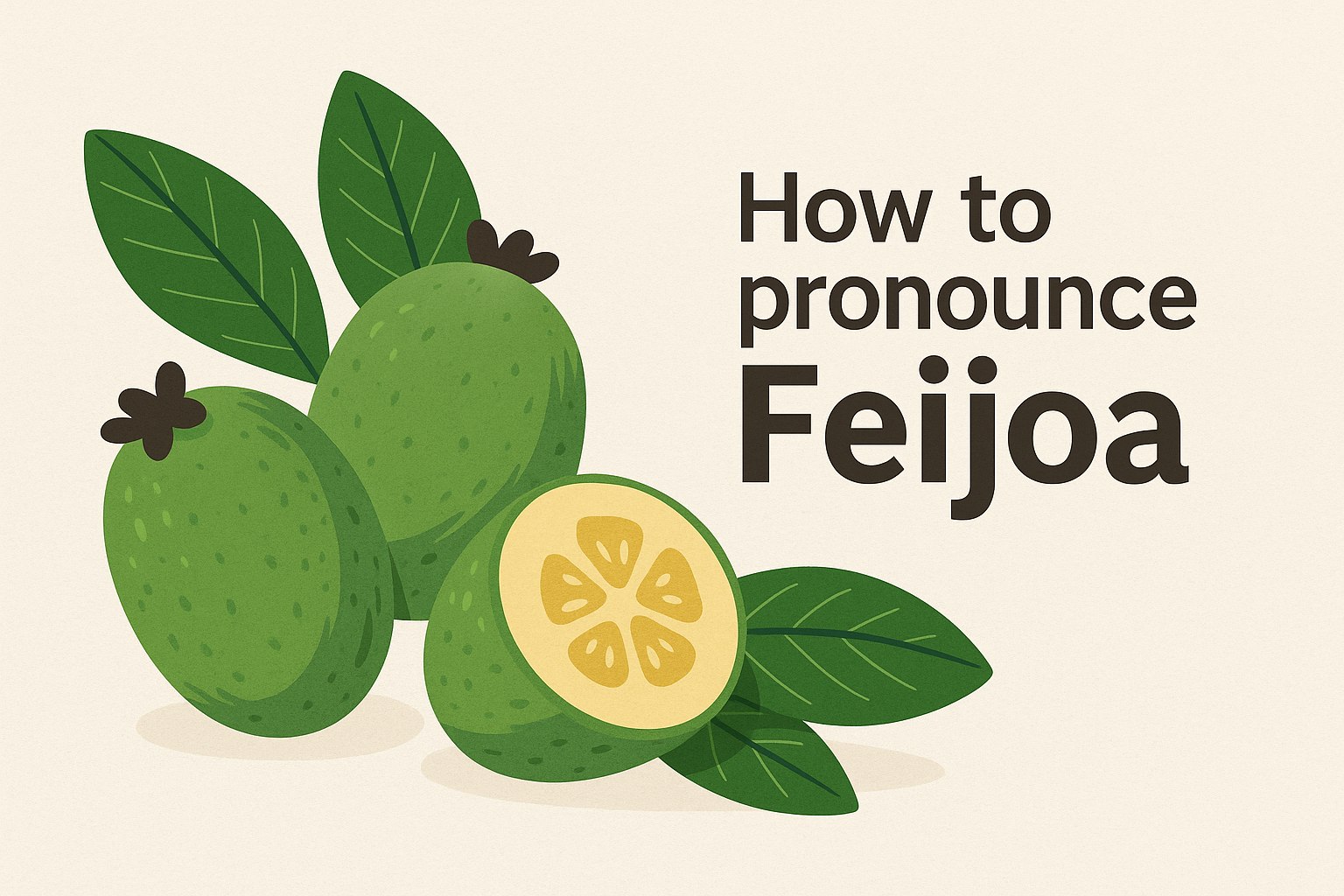How to pronounce
Feijoa
You might spot the word “feijoa” on a smoothie menu or in a Kiwi recipe and wonder how to say it. The spelling looks tricky, but once you know the sound of the “j” and the rhythm, it’s easy.
Step‑by‑Step Pronunciation Guide
British English: /feɪˈʒəʊ.ə/ → fay‑ZHOH‑uh
Breaking it down — fay (rhymes with day), ZHOH (soft “zh” as in “measure”), uh (quick, relaxed ending)American English: /feɪˈhoʊ.ə/ → fay‑HOH‑uh
Breaking it down — fay, HOH (like “hoe”), uh (quick, relaxed ending)Both versions keep the stress on the middle syllable. Say it in three beats: fay‑ZHOH‑uh in the U.K., fay‑HOH‑uh in the U.S.
Common Mispronunciations
• “fuh‑JOE‑ah” – wrong vowel in the first syllable and a hard “j”
• “FEE‑joe” – drops the final “uh” and misplaces stress
• “fay‑JOH‑ay” – adds an extra vowel at the end
Practice Sentences
• “The backyard feijoa tree is loaded with fruit this year.”
• “I made a batch of feijoa jam for breakfast.”
• “New Zealanders love adding feijoa to smoothies.”
Feijoa in Food Culture
In New Zealand, autumn is “feijoa season,” with roadside stalls selling the fragrant fruit by the bucket. Bakers turn them into cakes and crumbles, and brewers craft feijoa ciders and kombuchas.

Definition of
Feijoa
Feijoa is a green, egg‑shaped fruit native to South America and now popular in New Zealand, Australia, and parts of California. It tastes like a mix of pineapple, guava, and mint, and is enjoyed fresh or made into jams, juices, and desserts.
What does it mean
Feijoa
Named after Portuguese botanist João da Silva Feijó; the fruit spread from its native South America to New Zealand and Australia in the late 19th century.
Frequently asked questions
Auto-record your calls for instant
feedback on communication

Know how to improve speaking
after every Google Meet call





.svg)
.avif)
